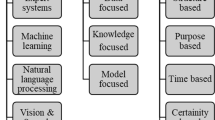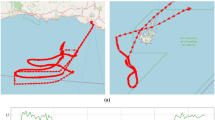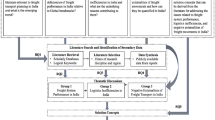Abstract
The short Baltic export route for Russian oil is an attractive source of supply for the European energy market. The article examines the Russian oil export trade in the Baltic based on Automatic Identification System (AIS) data from 2005 matched with supplementary data. The first part of the article gives a survey of activities and characteristics of 261 large crude oil tankers, their flag states and owner countries. The second part views the data in the context of accidental oil spill risk. Greek and Russian owners are leading carriers in this trade. Russia plays a double leading role as oil exporter and shipowning country, securing major cargo shares for nationally owned vessels, while also giving a preferential spot in the trade to Greek owners. Where environmental aspects are concerned, previous research has linked vessel characteristics with the risk of casualty. Knowledge of flag, age, ownership and activity levels adds useful information about environmental risk. The data show that flags associated with very high casualty or detention probabilities were represented by 18% of the activity in this trade. Older vessels have a similar share, and at this particular time probably represent the more serious threat of accidental oil spills.
Similar content being viewed by others
References
Alderton, Tony and Nik Winchester. 2002. Flag states and safety: 1997–1999.Maritime Policy & Management 29, no. 2: 151–162.
Ayios, Angela. 2004.Trust and Western-Russian Business Relationships. Aldershot: Ashgate.
Corres, Alkis-John E. and Athanasios A. Pallis. 2008. Flag State Performance: An Empirical Analysis.WMU Journal of Maritime Affairs 7, no. 1:241-261.
Degré, Thomas. 2008. From Black-Grey-White Detention-based Lists of Flags to Black-Grey-White Casualty-based Lists of Categories of Vessels?Journal of Navigation 61: 485–497.
DeSombre, Elizabeth R. 2006.Flagging Standards: Globalization and Environmental, Safety, and Labor Regulations at Sea. Cambridge MA: MIT Press.
DeSombre, Elizabeth R. 2008. Globalization, Competition, and Convergence: Shipping and the Race to the Middle.Global Governance 14, no. 2: 179–198.
Devanney, Jack. 2008. Uses and Abuses of Ship Casualty Data. Center for Tankship Excellence. http://www.martrans.org/documents/2008/misc/Devanneys%20casdata. pdf (accessed October 1,2009).
European Union. 1993. Council Directive 93/75/EEC of 13 September 1993 Concerning Minimum Requirements for Vessels Bound for or Leaving Community Ports and Carrying Dangerous or Polluting Goods.Official Journal 36, L247: 19–27.
—. 1995. Council Directive 95/21/EC of 19 June 1995 Concerning the Enforcement, in Respect of Shipping Using Community Ports and Sailing in the Waters under the Jurisdiction of the Member States, of International Standards for Ship Safety, Pollution Prevention and Shipboard Living and Working Conditions (Port State Control).Official Journal 38, L157: 1–19.
Grammenos, Costas T., and Chong Ju Choi. 1999. TheGreek Shipping Industry Regulatory Change and Evolving Organizational Forms.International Studies of Management and Organization 29, no. 1: 34–52.
HELCOM. [no date — 2002]. Compilation on Ship Accidents in the Baltic Sea Area in 2000 and 2001. http://www.helcom.fi/stc/files/Maps/accidents/accidents2000to2001. pdf (accessed October 1, 2009).
HELCOM. [no date — 2003]. Compilation on Ship Accidents in the Baltic Sea Area in 2002 http://www.helcom.fi/stc/files/Maps/accidents/accidents2002.pdf (accessed October 1, 2009).
HELCOM [no date — 2004]. [No title — compilation of accident statistics for 2003] http://www.helcom.fi/stc/files/Maps/accidents/accidents2003.pdf (accessed October 1, 2009).
HELCOM. [no date — 2005/2006]. Report On Ship Accidents In The Baltic Sea Area For The Year 2004 (updated September 2006). http://www.helcom.fi/stc/files/ shipping/ship%20accidents%202004.pdf (accessed October 1, 2009).
HELCOM. [no date — 2006]. Report On Shipping Accidents In The Baltic Sea Area For The Year 2005. Helsinki Commission, Baltic Marine Environment Protection Commission. http://www.helcom.fi/stc/files/shipping/ship%20accidents%202005.pdf (accessed October 1, 2009).
HELCOM. [no date — 2007]. Report on Shipping Accidents in the Baltic Sea Area for the Year 2006. Helsinki Commission, Baltic Marine Environment Protection Commission. http://www.helcom.fi/stc/files/shipping/shipping_accidents_2006.pdf (accessed October 1, 2009).
HELCOM. 2006b. Maritime Transport in the Baltic Sea. Draft HELCOM Thematic Assessment in 2006. HELCOM Stakeholder Conference on the Baltic Sea Action Plan. Helsinki, Finland, 7 March 2006.
HELCOM. 2008. Activities 2007. Overview. Baltic Sea Environment Proceedings No. 114. Helsinki Commission Baltic Marine Environment Protection Commission. http://www.helcom.fi/stc/files/Publications/Proceedings/bsep1 14.pdf (accessed October 1, 2009).
Hietala, Meri. 2006. Oil Transportation in the Gulf of Finland. A Risk for the Nature of the Baltic Sea. Finnish Environment Institute. June 29, 2006. http://www. ymparisto. fi/download.asp?contentid=53583&lan=EN (accessed October 1, 2009).
Huijer, Keisha. 2002. Trends in Oil Spills from Tanker Ships 1995–2004. The International Tanker Owners Pollution Federation (ITOPF). http://www.itopf.com/_assets/documents/amop05. pdf (accessed October 1, 2009).
International Maritime Organization (IMO). 2007. Flag State Implementation. http:// www.imo.org/Safety/mainframe.asp?topic_id=156 (accessed October 1, 2009).
Knapp, Sabine. 2007.The Econometrics of Maritime Safety. Recommendations to Enhance Safety at Sea. PhD dissertation, Erasmus University Rotterdam.
Knapp, Sabine and Philip Hans Franses. 2007. Econometric Analysis on the Effect of Port State Control Inspections on the Probability of Casualty: Can Targeting of Substandard Ships for Inspections Be Improved?Marine Policy 31, no. 4: 550–563.
Knudsen, Olav F. 2006. Environmental Constraints and Market Forces as Elements in a Disputed Regime: The Case of Russian Oil Exports in the Baltic Sea. Paper presented at the annual meeting of the International Studies Association, San Diego, California, USA, March 22, 2006.
Leeds, Christopher A. 1999. Worldframes and Cultural Perspectives with Specific Focus on Scandinavia and Russia. InStability and Security in the Baltic Sea Region: Russian, Nordic and European Aspects, ed. Olav F. Knudsen, 78–96. London: Frank Cass.
Maritime International Secretariat Services. 2006.Shipping Industry Guidelines on Flag State Performance. 2nd ed. London: Maritime International Secretariat Services Limited. Also available online: http://www.marisec.org/flag-performance/flagperformance.pdf└l. (accessed October 1, 2009).
Nilsson, Rolf P. 2005. Russian Shipping on the Quality Track.Scandinavian Shipping Gazette, December. http://www.shipgaz.com/old/magazine/issues/2005/12/magazine_1205.php (accessed October 1, 2009).
Psaraftis, Harilaos N. 2008. Environmental Risk Evaluation Criteria.WMU Journal of Maritime Affairs 7, no. 2: 409–427.
Rodin, Johnny. 2008. Russian Oil Exports in the Baltic Sea — Actors and Interests. (Manuscript in progress). Swedish version: Finska viken — Rysslands val,Nordisk Östforum, no 3, 2009.
Stankiewicz, Monika. 2007. Shipping Accidents In The Baltic Sea For The Year 2006 — Draft Report. Presentation made at the HELCOM TRANSIT ROUTE EWG 10/2007 meeting. http://meeting.helcom.fi/c/document_library/get_file?p_l_id= 18831&folderId=76252&name=DLFE-30774.pdf (accessed October 1, 2009).
Thomopoulos, Panayotis. 2006. The Greek Economy and its Outlook. Speech by The Deputy Governor of the Bank of Greece, September 1. http://eng.bankofgreece.gr/ en/announcements/text_speech.asp?speechid=107 (accessed October 1, 2009).
Uggla, Ylva. 2007. Environmental Protection and the Freedom of the High Seas: The Baltic Sea as a PSSA from a Swedish Perspective.Marine Policy 31: 251–257.
Varner, Iris I. 2000. The Theoretical Foundation for Intercultural Business Communication: A Conceptual Model.Journal of Business Communication 37, no. 1: 39–57.
Author information
Authors and Affiliations
Corresponding author
Rights and permissions
About this article
Cite this article
Knudsen, O.F. Large oil tankers and the Baltic marine environment: A statistical survey. WMU J Marit Affairs 8, 145–172 (2009). https://doi.org/10.1007/BF03195158
Issue Date:
DOI: https://doi.org/10.1007/BF03195158




